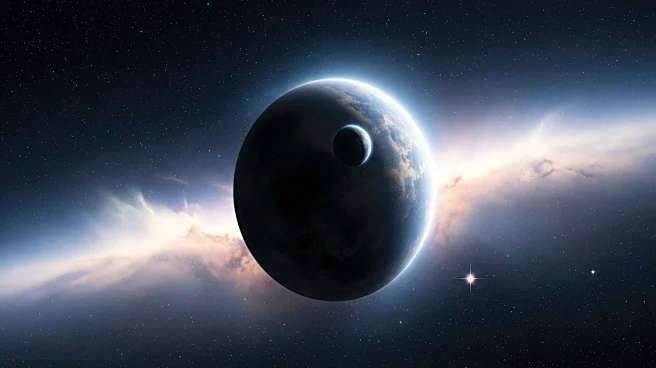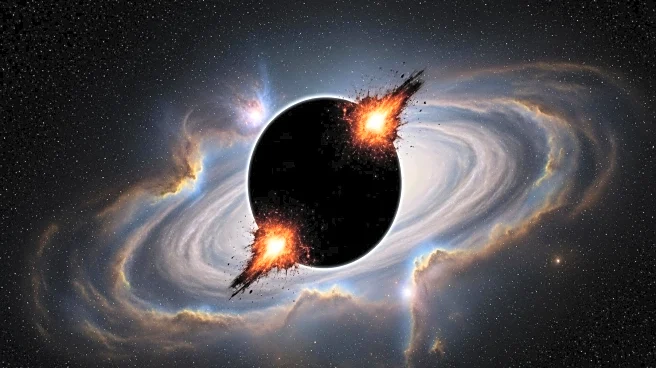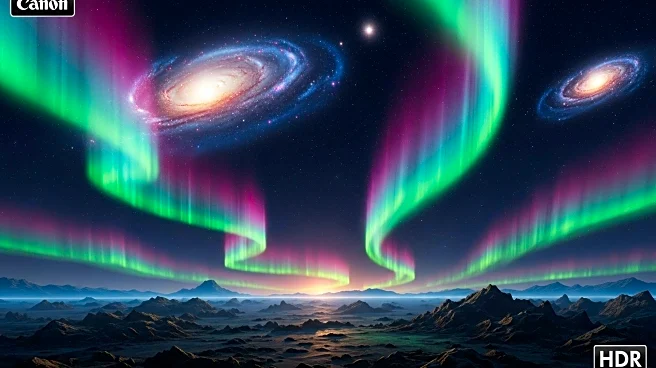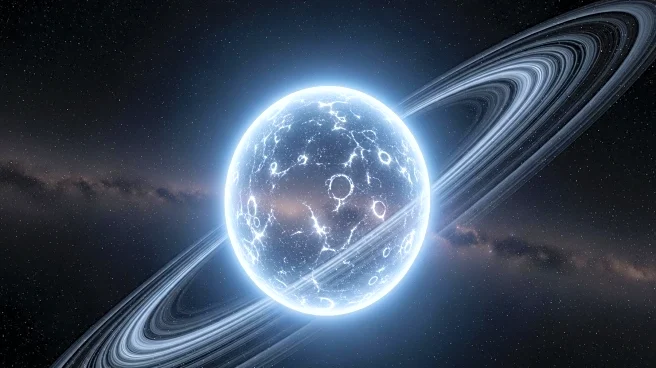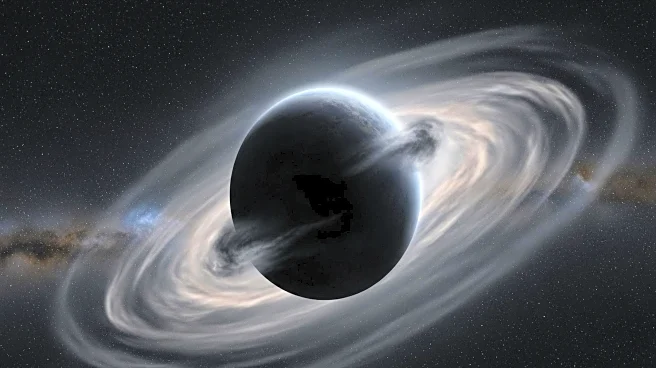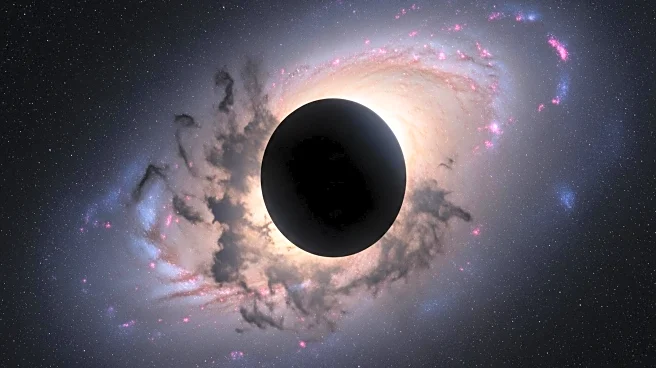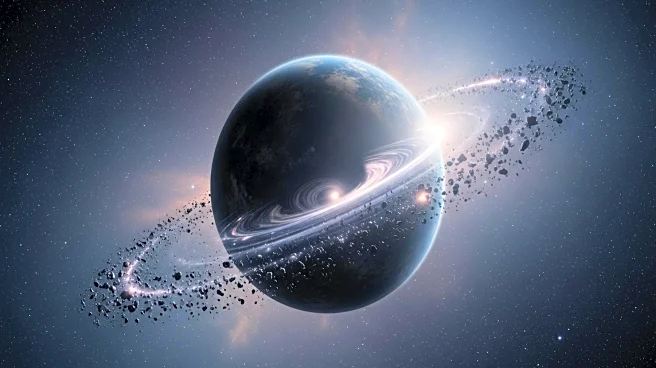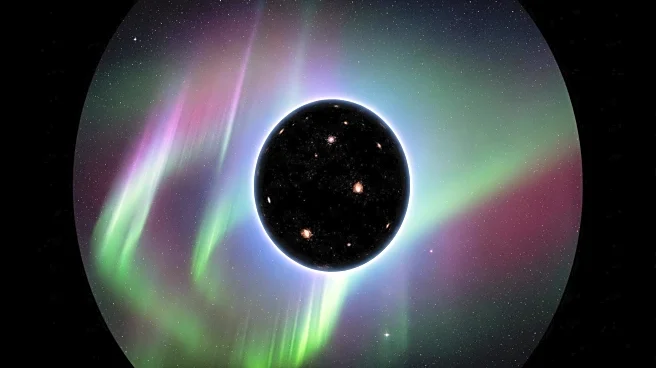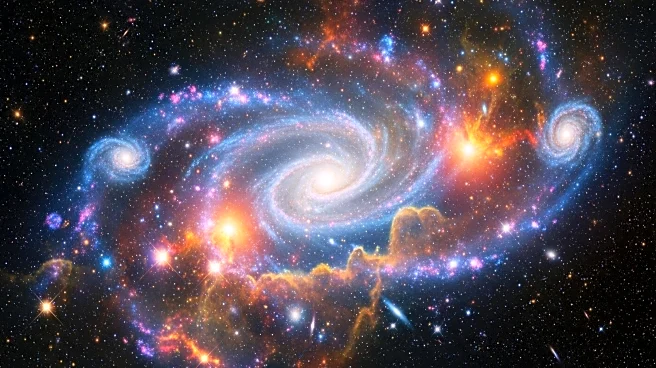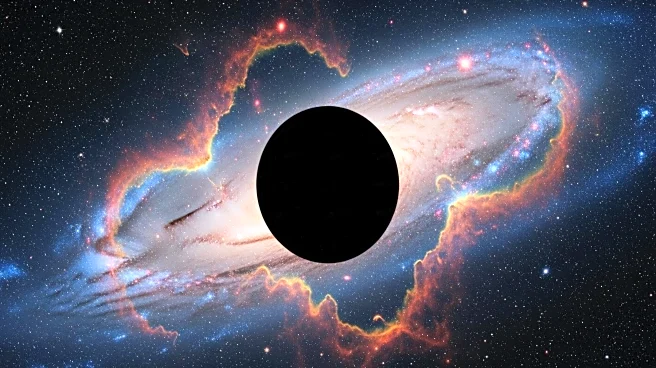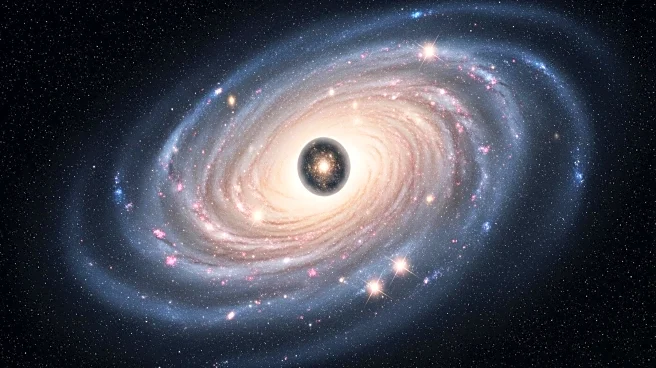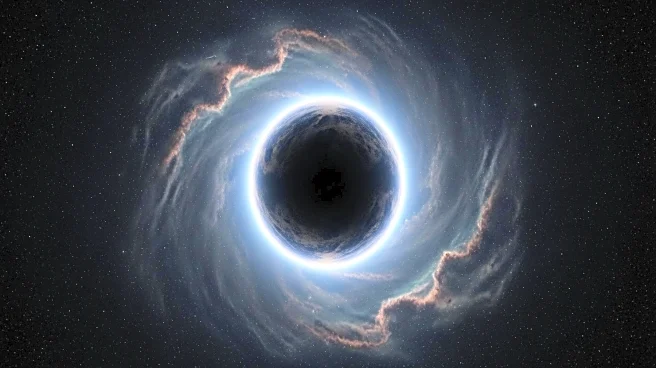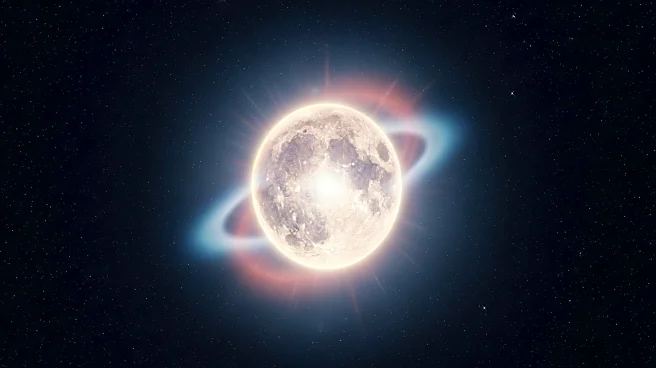What is the story about?
What's Happening?
Astronomers have observed a rogue planet, Cha 1107-7626, experiencing an unprecedented growth spurt, consuming gas and dust at a rate of six billion tons per second. This discovery was made using the European Southern Observatory's Very Large Telescope. Rogue planets, unlike those in our solar system, do not orbit stars and are free-floating. The planet, located about 620 light-years away in the constellation Chamaeleon, is still forming and is surrounded by a disk of material. The rapid accretion rate provides new insights into the formation and growth of such planetary-mass objects.
Why It's Important?
The discovery of Cha 1107-7626's rapid growth challenges existing theories about planet formation and blurs the line between stars and planets. Understanding the accretion processes of rogue planets can offer valuable insights into the early stages of planetary development and the conditions that lead to their formation. This finding also raises questions about the potential for rogue planets to develop planetary systems of their own, similar to stars. The study of such objects can enhance our knowledge of the diversity and complexity of planetary systems in the universe.
What's Next?
Further observations and studies are needed to understand the mechanisms driving the rapid accretion observed in Cha 1107-7626. The upcoming Extremely Large Telescope, with its advanced capabilities, may provide more detailed observations of rogue planets and their environments. This could lead to new discoveries about the nature of these objects and their role in the broader context of planetary science. Continued research may also explore the potential for rogue planets to host conditions suitable for life, expanding the search for habitable worlds beyond traditional planetary systems.
AI Generated Content
Do you find this article useful?
